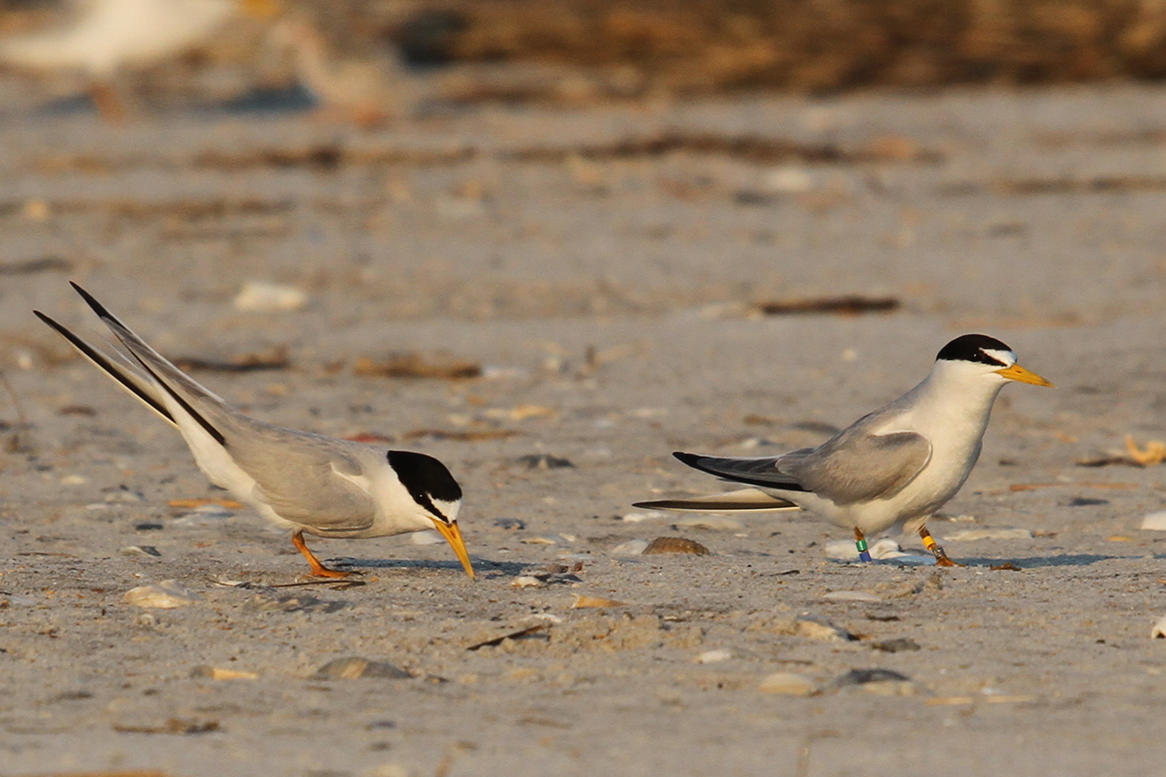Bird banding is an essential piece of collecting valuable data and understanding bird conservation. In this series, we’ll explore the necessity of bird banding practices and explore insights found through the shared data of our birds from North Carolina’s coast to the entire Atlantic Flyway.
Please welcome Coastal Biologist Lindsay Addison.
This Least Tern was banded as an adult on Cape Lookout National Seashore in the summer of 2010. It reappeared in August of 2012 on the south end of Wrightsville Beach.
The tern was banded as part of a master’s thesis project on Least Terns nesting on the seashore. Some of the questions being asked in the study were related to site fidelity, so individuals needed to be marked. The plastic color bands it wears are arranged in a unique pattern, which identify it as an individual.
Least Terns nesting in California have shown high site fidelity, meaning they are likely to return to the same nesting site in subsequent years, especially if they were successful there the year before. However, Least Terns are also opportunistic. Because they nest in changeable coastal habitats they have to be willing to prospect for new nesting sites.

That is one reason why a Least Tern that nested on Cape Lookout in 2010 would show up in southeastern North Carolina two years later.
August is late in the season for a Least Tern to begin nesting; however, this individual and its un-banded mate were scraping out new nest starts. This tern may have failed elsewhere and been attracted by the large Least Tern colony that was present on Wrightsville Beach in 2012. It could also have still been feeling nesting urges, and without a chick to feed it was exercising them by scraping instead.
Day length affects hormone levels in birds, and these tend to drive behaviors such as courtship, nesting and migration. In any case, this Least Tern didn’t nest, but it did add excitement to the beach with its bands.
For more information on Audubon NC’s bird banding program and more recorded species, click here.
Spotting and reporting banded birds is a great way to become a citizen scientist and contribute to our knowledge of birds on the coast. Always remember to give birds the space they need to thrive. Click here to learn more about Audubon’s Sharing Our Seas and Shores program.



